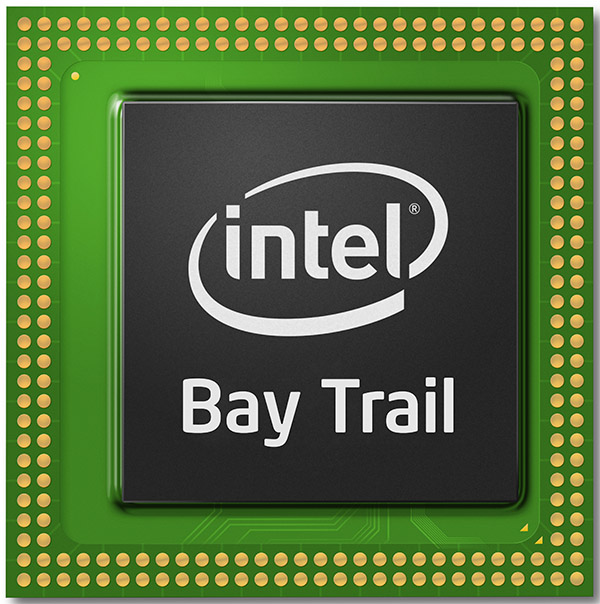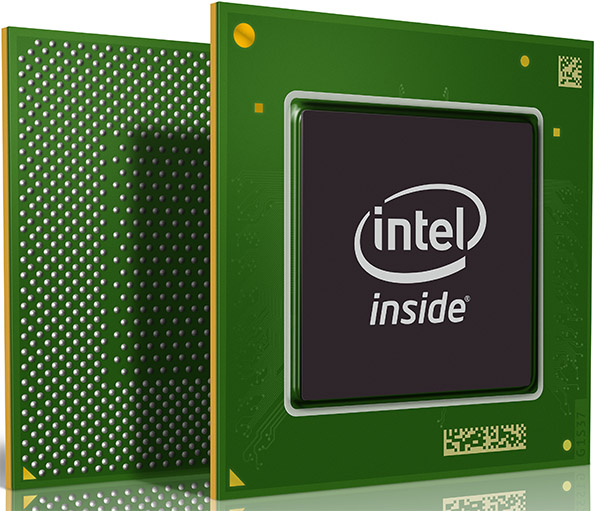Bay Trail On The Desktop: Celeron J1750 Gets Benchmarked
Last week, Intel rolled out its Bay Trail SoCs based on the Silvermont architecture. The company focused most intently on its tablet-oriented Atom models. However, we got our hands on a Celeron J1750, soldered onto a motherboard, for desktop testing.
Celeron J1750: Bay Trail Is Faster And Much More Efficient
When Intel introduced us to its Silvermont architecture, the company made grand claims of increased performance at a given thermal ceiling, or similar performance at reduced power. Naturally, we couldn't wait to get our hands on one of the first implementations, but it was understood that the Bay Trail-based SoCs featuring this new design wouldn't be ready until the second half of 2013.
Intel showed off the Atom Z3000 series for tablets at IDF last week, putting real benchmark data behind those earlier claims. And while we're positively inquisitive about how Bay Trail might deliver a better experience in more taxing applications and simultaneously stretch battery life out across a day, we were busy testing a desktop-oriented version of the SoC. Whereas the Atom Z3000s are only running in 32-bit environments, our testing took place under Windows 8 64-bit.
Indeed, there's certainly something to be said for using one form factor to compare multiple products against each other. To that end, our power and efficiency numbers are what impressed me most. It's clear from the logging power over time and charting performance that the dual-core Celeron J1750 isn't as fast as the least-expensive Ivy Bridge-based Celeron you can find on Newegg. And maybe Celeron branding isn't even appropriate for a 10 W SoC in an entirely different league.
But we still see that the entry-level J1750 finishes our suite of tests significantly faster than Atom D2700. Yes, the Atom-based platform has an on-board GeForce GT 520 GPU that we cannot factor out of our power equation, which affects our ability to compare their efficiency directly. The discrete graphics chip also conveys a performance advantage in 3D titles too, though. Just remember that the Atom D2700 is a 10 W part, similar to Celeron D1750, and that GeForce GT 520 uses up to 29 W. Remove the GPU and you'd likely be looking at very similar power from last generation's Atom. Based on our performance data, Bay Trail still comes away with an indisputable blue ribbon for efficiency.
And all of this comes from two Silvermont cores. The Pentium J2850 gives you four of them, the same 2.4 GHz peak core clock, higher graphics engine frequencies, and again, a 10 W thermal ceiling. Naturally, we're expecting an even more compelling performance story in our threaded tests once the quad-core models start surfacing.
Until then, we walk away from our first experience with Intel's Bay Trail SoC impressed. The company wasn't exaggerating when it suggested that the Silvermont architecture could as much as double performance at a given power limit. Snappy little passively-cooled platforms are almost certainly on their way toward the end of the year. Intel tells us that its partners are already working on fully integrated desktops and all-in-one designs, as well as channel-oriented motherboards with soldered-down CPUs.
Get Tom's Hardware's best news and in-depth reviews, straight to your inbox.
Current page: Celeron J1750: Bay Trail Is Faster And Much More Efficient
Prev Page Results: Media Encoding-
SteelCity1981 only 2mb of l2 cache for 4 cores. talk about starving 4 cores with 2mb of l2 cache.Reply -
DjEaZy ... interesting is the modular core thingy.. it ir like the FX module from AMD... 2 cores on joined L2 cache? Hmm... and GPU on the silicon... it seams, intel waits till the software is there...Reply -
stickmansam Reply11551610 said:... interesting is the modular core thingy.. it ir like the FX module from AMD... 2 cores on joined L2 cache? Hmm... and GPU on the silicon... it seams, intel waits till the software is there...
Shared L2 cache exists on Intel's side during the Core 2 era with two or more cores sharing the L2 cache, similar to how L3 cache is shared now except there is an additional private L2 cache. Basically, with Nehalem, Intel moved the shared cache a level lower to L3 and put in a new private cache (L2). GPU on the same die/chip has been on Intel's side too for quite a while as well....
11551497 said:only 2mb of l2 cache for 4 cores. talk about starving 4 cores with 2mb of l2 cache.
The i5s have actually less cache than the Q9x50's so cache size isn't everything. Their ipc is still lower than the Athlon IIx4's which have similar amounts of cache are not that bottle necked (compared to Phenom II's, maybe 20% slower?). Cache implementation also matters and the shared L2 should be better than the piecemeal Athlon II L2, provided the cores don't thrash each other.
Bay Trail is a quite interesting chip with good enough performance to pretty much beat out most ARM chips in tablets yet provide comparable power efficiency and graphics. The price is not too high either, with the top end chip ~$40, making it at least somewhat competitive with ARM. The ability to run Android/Linux/Windows 8 means that OEM's can build one product to sell to different markets and save on production line costs. It also lets them adjust the OS to meet market demand on the go potential (ship non selling OS version back to factory and load OS that sells better and send it back out). ASUS seems to have something like that going on with the T100 having buttons half way between Windows and Android and no Windows branding.
This all makes me want to grab a Bay Trail and run both Android and Windows on it, have Windows when I use it connected to a screen for desktop and run desktop apps and then Android on the go so I get the larger app store (Windows if I am lazy). -
vipervoid1 There is Kabini in the review ??Reply
Why compare Richland with this ??
Isn't Kabini is the one to compare ?? -
runswindows95 Then again, the thing to keep in mind these CPU's aren't gaming / workstation CPU's. These CPU's will quite honestly work for the majority of PC owners, who mainly do social media and Youtube. A quad-core that only uses 10W intrigues me a lot since I don't game, but do a lot of heavy word processing.Reply -
ojas Reply
Agreed.11551718 said:There is Kabini in the review ??
Why compare Richland with this ??
Isn't Kabini is the one to compare ??
Though, Tech Report and AnandTech have previewed the Z3770 and put it up against mobile chips and Kabini.
(hint: the 4w Z3770 matches a 15w A4-5000 Kabini and soundly thrashes ARM in CPU performance)
http://techreport.com/review/25329/intel-atom-z3000-bay-trail-soc-revealed
http://www.anandtech.com/show/7314/intel-baytrail-preview-intel-atom-z3770-tested -
de5_Roy i sorely missed a kabini setup in the benches and efficiency tests. i woulda liked to see both bay trail and kabini socs run 1080p and 1600p gaming (tablet oriented).Reply
a few nitpicks:
in the test hardware chart - a4 4000 doesn't have L3 cache. afaik, neither does baytrail (1MB shared L2).
in the bga 65w skus vs bga 10 skus table, the core i- cpus clockrates are base clockrate, turbo is missing while baytrail socs' burst clockrate is reported while base clockrate is absent. -
Wisecracker Reply11552261 said:
Agreed.11551718 said:There is Kabini in the review ??
Why compare Richland with this ??
Isn't Kabini is the one to compare ??
Though, Tech Report and AnandTech have previewed the Z3770 and put it up against mobile chips and Kabini.
(hint: the 4w Z3770 matches a 15w A4-5000 Kabini and soundly thrashes ARM in CPU performance)
http://techreport.com/review/25329/intel-atom-z3000-bay-trail-soc-revealed
http://www.anandtech.com/show/7314/intel-baytrail-preview-intel-atom-z3770-tested
Not according to Tom's ...
Power consumption looks great ... especially compared to a 65w Richland desktop (WTF, THG?) ... but the A4-5000 remains quite formidable in efficiency according to Tom's own testing
Graphics performance compared to the AMD SoCs must blow, or it would have been hyped to the max. I suspect this means Bay Trail will be Temash'd (or, Kabini'd).
-
CaedenV Looks like these new Atom based Celerons and Pentiums are what I want to look for in my little always-on server build I am prepping for. Extremely low power, enough performance to run a gigabit NAS, and hopefully some passive or other extremely quiet cooling solutions. I just hope that the motherboards offer some RAID options to work with in FreeNAS and the price is appropriately cheap.Reply


